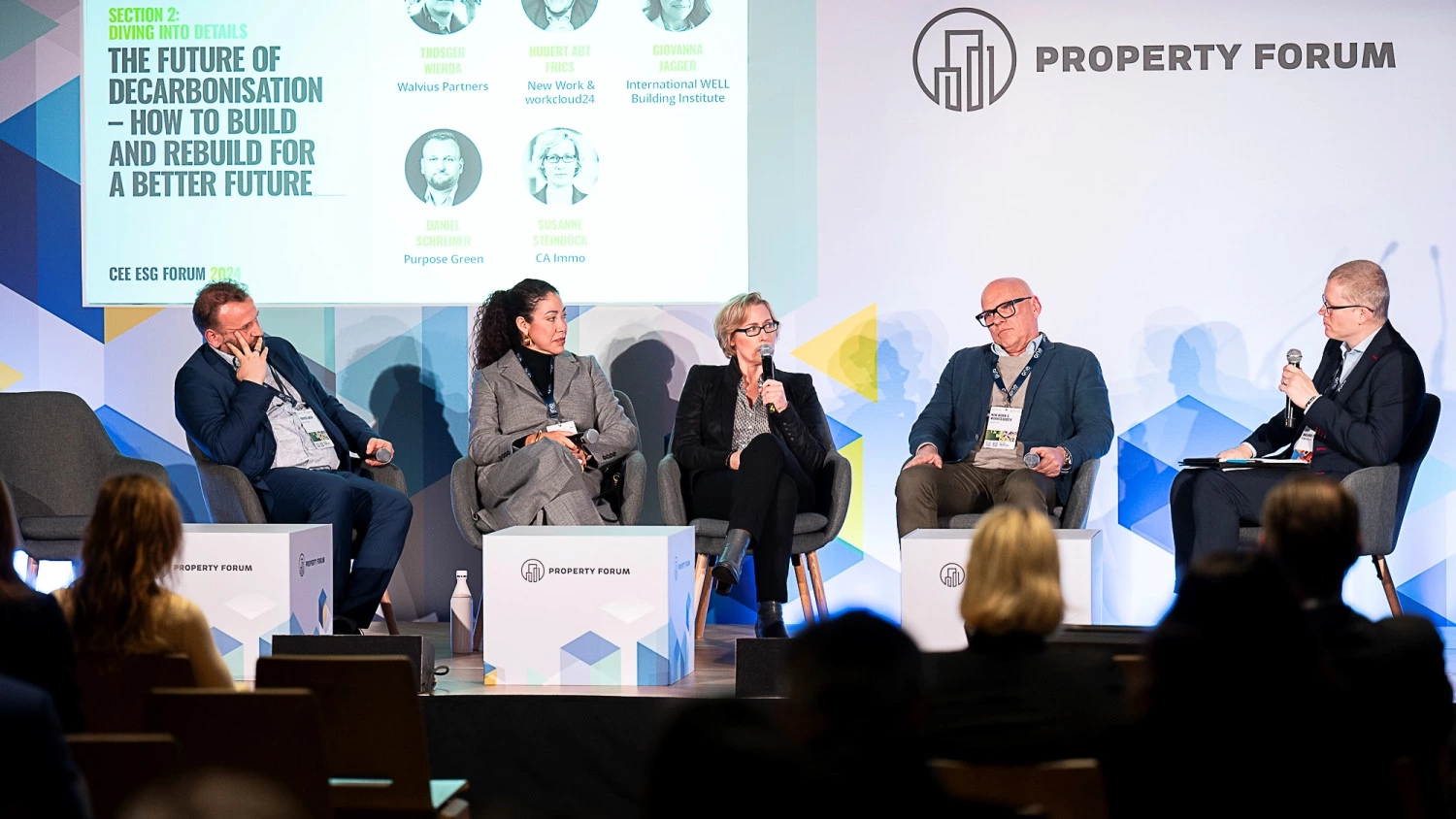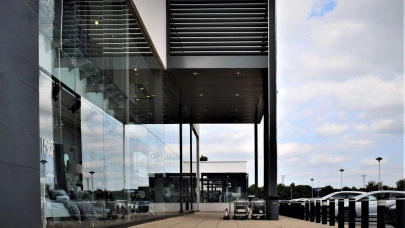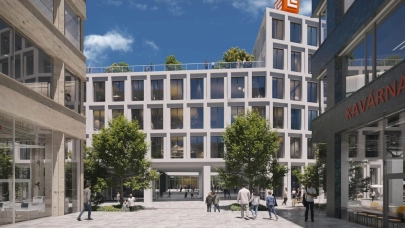
Which is better to meet ESG goals? Greenfield investments or conversion of existing buildings? Wise people say: it depends. Although a lot of top experts took part in a panel at the first CEE ESG Forum organised by Property Forum and Green Forum in Vienna last November, no clear answer emerged from the discussion.
Participants of the panel, chaired by Tjidsger Wierda, ESG Partner, Walvius Partners, discussed strategies for reducing carbon emissions across the property lifecycle, including the use of green materials, new technologies, and sustainable design principles. They covered the challenges of repurposing buildings, with a focus on energy efficiency and the role of regulations and market dynamics in driving sustainable practices. All agreed on the importance of collaboration among developers, investors, and policymakers to meet climate goals.
Surprisingly, experts said that the level of awareness was still very low among asset managers and decarbonisation is in a relatively early stage across most of the countries in the CEE region. Susanne Steinböck, Group Head of Sustainability and Corporate Communications, CA Immo said that „top-down awareness was needed within companies”.
The biggest problem is the existing stock as the majority of commercial buildings are in their 30s and 40s without having a major technical reconstruction over the past two decades. The chair cited the latest Eurostat figures on this problem saying that at least 40 per cent of office buildings in Europe do not meet ESG requirements. Je also said that property and facility managers still face problems with measuring the individual energy consumption of the tenants as older buildings are not ready to install necessary systems.
Hubert Abt FRICS, CEO, of New Work & workcloud24 added that future development projects will always be green and urged to develop a reliable data management which could help to increase energy efficiency at the old stock. „There are too many different sensors in older buildings which are not compatible. There should be only one single system however expensive is,” he argued.
At this point, the chair raised the question of whether developers should opt for a greenfield project where the picture is clear and there are no hurdles on the road or take a seemingly harder way with a conversion of an outdated office building into a residential or a hotel complex. There was no clear answer but the audience got a chance to hear a story from Giovanna Jagger, Senior Director of ESG Market Development EMEA, International WELL Building Institute.
She referred to Canary Warf in London’s Docklands area. Some 12-15 years ago banks prevailed among tenants of high-rises there and the whole district was grey, empty after 5 pm. and very expensive to rent office space and residential properties. After the Great Financial Crisis, banks started to shrink and partially abandon that expensive area. Developers realised that converting those buildings into student accommodation complexes or flats made sense. The most recent example is the HSBC Tower, one of the legacy buildings there. It will be vacated by 2027 and repurposed and reused. Everything is aligned with sustainability, and that's why the entire Canary Wharf group is behind this. „Now we can say that the social impact is bigger than the cost of repurposing. This takes us closer to the ESG goals”, she emphasized.
Susanne Steinböck added that not all areas in leading cities are eligible to make massive conversions. „We can not and should not bury classical prime offices in prime locations. Those will always find their clients,” she added. She also linked sustainability to profitability, emphasizing that there will be increased pressure on rents and values for non-prime office assets and weaker assets in non-central locations. „These owners will struggle, and then that's where probably more and more stranded assets come in that can't be rented and that can't be sold at some point in time”, she argued.
Having a lot of experience in the Polish office market, Hubert Abt explained how the Mokotów area has been transforming in Warsaw. He said that approximately 30% of the office stock there had already changed its function and more repurposing is to come in the coming years. He also argued that a greenfield project can be more expensive than converting or refurbishing an existing property as regulations for any new construction will have to meet much stricter conditions.
Daniel Schreiner, ESG Lead at Purpose Green urged bigger pressure on the real estate industry from banks and the societies. „It's a bold thing. It's a collaboration. So even society can put pressure on landlords, which goes back to the social aspect of ESG as well.” In his view, it is not enough to raise the standards of professional work of owners, landlords, tenants or construction companies but it is high time for lawmakers to adopt regulations to the real world. That would accelerate the process of ESG compliance. He sees more renovation and conversion projects to come shortly and is very confident that these will dominate the market over a long period across the whole European continent and the CEE region in particular.



